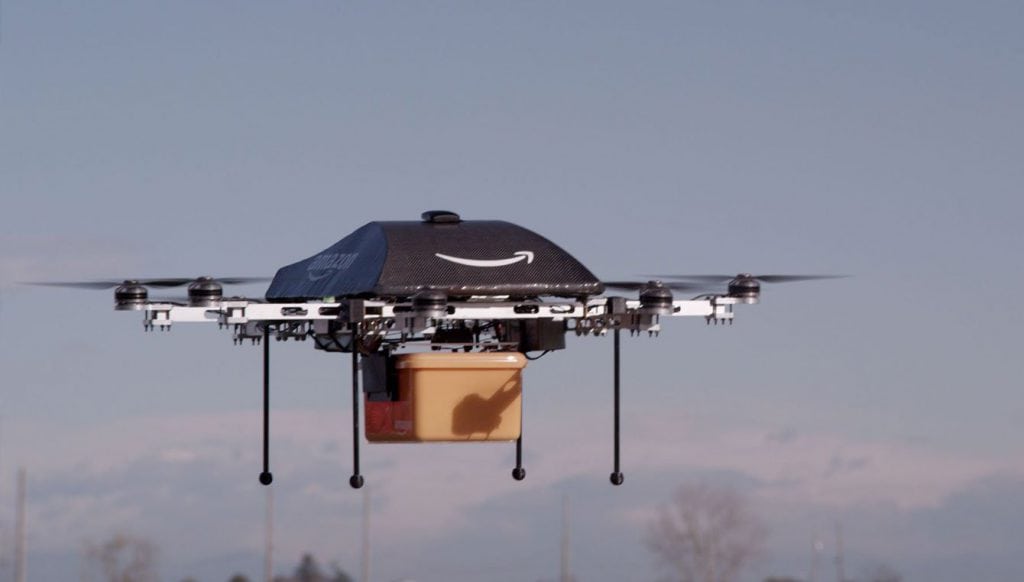
Ten unmanned aircraft systems (UAS) received airworthiness criteria for certification from the Federal Aviation Administration (FAA) in the next step towards integrating small UAS into the national airspace.
Ten unmanned aircraft systems (UAS) received airworthiness criteria for certification from the Federal Aviation Administration (FAA) in the next step towards integrating small UAS into the national airspace, according to a Nov. 23 press release.
The UAS given special class aircraft criteria for airworthiness certification are all electric, range from five to 89 pounds, and include fixed-wing and rotorcraft. The 10 applicants recognized by the FAA include 3D Robotics, Airobotics, Amazon, Flirtey, Flytrex, Matternet, Percepto, Telegrid, Wingcopter, and Zipline.
“The development of airworthy, durable, and reliable unmanned aircraft is a crucial step forward for this innovative sector,” Dr. Michael C. Romanowski, director of Aircraft Certification Service Policy and Innovation, said in a press statement. “Type certification will help increase both public and regulatory confidence in drone technology as operations become more advanced.”
The criteria released by the FAA for UAS is unlike traditional type certification because it certifies the system by looking at performance and risk calibration, Chris Anderson, CEO of 3D Robotics, told Avionics International.
“What it really means is rather than certifying every nut and bolt and component, let’s just treat the system as a system and say look if you say the system does X, prove it does X, build up enough statistical power over thousands of flights that we’re confident that it really does X, then we don’t really care what’s inside it,” Anderson said. “Drones are essentially using off the shelf parts and you can’t control the entire supply chain the way an aerospace company would and so what it allows us to do is to sort of treat these vehicles like what they really are which is consumer electronic devices that update very quickly and innovate very quickly.”
Anderson said this will allow UAS manufacturers to operate on a smartphone innovation cycle instead of the traditional aviation certification timeframe which can take years. This will allow new versions of a UAS to come out without having to re-certify it every time.
“Basically, drones operate on a kind of a smartphone-like innovation cycle. So, every six months a new version comes out and they have a lifespan of about two to three years. It’s very different from traditional aviation and what that says for performance-based is, hey you know if you need to switch out your nuts and bolts and change one motor for another as long as it’s not a critical part, go for it. You don’t have to re-certify. And that allows us to basically be the drone companies that we really are, which is fast and innovative without a huge regulatory burden.”
The released criteria are just the next step in certification and do not indicate that these companies have achieved airworthiness certification by the FAA. The public has 30 days to comment on the applicant’s criteria and then the FAA will publish a final draft of the airworthiness criteria. The applicants will then prove they meet requirements before being certified.
Anderson worked with the FAA on the criteria and ran the American Society for Testing and Materials (ASTM) process that goes alongside these requirements.
“The way regulations work is that the government says what they want and then they turn to industry to say how to achieve it,” Anderson said. “So, in this case, the FAA gave the performances they want, and they turn to ASTM to define how to do the tests necessary to satisfy that.”
The airworthiness criteria released by the FAA include general requirements like a concept of operations; design and construction requirements such as control stations, software, and cyber security; operating limitations and information like flight manuals and instructions for continued airworthiness; and testing requirements such as durability and reliability.
Anderson said this step in the process is about recognizing that the process has started and that companies have defined the designs of their unmanned aircraft. While 3D Robotics and other companies have already completed demonstrations, some will need to complete those before moving to the production certificate.
“It’s one thing to certify that a vehicle is airworthy, it is another thing to certify that all your vehicles are airworthy,” Anderson said. “A production certificate is where we all are, most of us are, right now and that hopefully will be done with that by Q1 but only then can we actually start to take advantage of the permissions afforded by type certification and that’s when it gets exciting, that’s when we can do the stuff we really care about.”
The things these companies will be able to do once getting a production certificate include beyond visual line of sight (BVLOS) operations and night flying. Anderson said, most importantly, they can start looking at the pilot to aircraft ratio.
“It’s crazy, I’ve been in this industry now for almost 13 years and we still haven’t achieved drones,” Anderson said. “We haven’t really achieved autonomy. It is still one operator on the ground and a vehicle in the air and guys might as well be flying it for all the efficiencies we’ve achieved. It’s only once you can amplify or extend human abilities to one operator and 10s or hundreds of thousands of vehicles operating autonomously that’s when you achieve the vision that we’ve all had in mind for drones all along.”
Anderson said 3D Robotics has a one pilot to 20 UAS ratio in its plan.